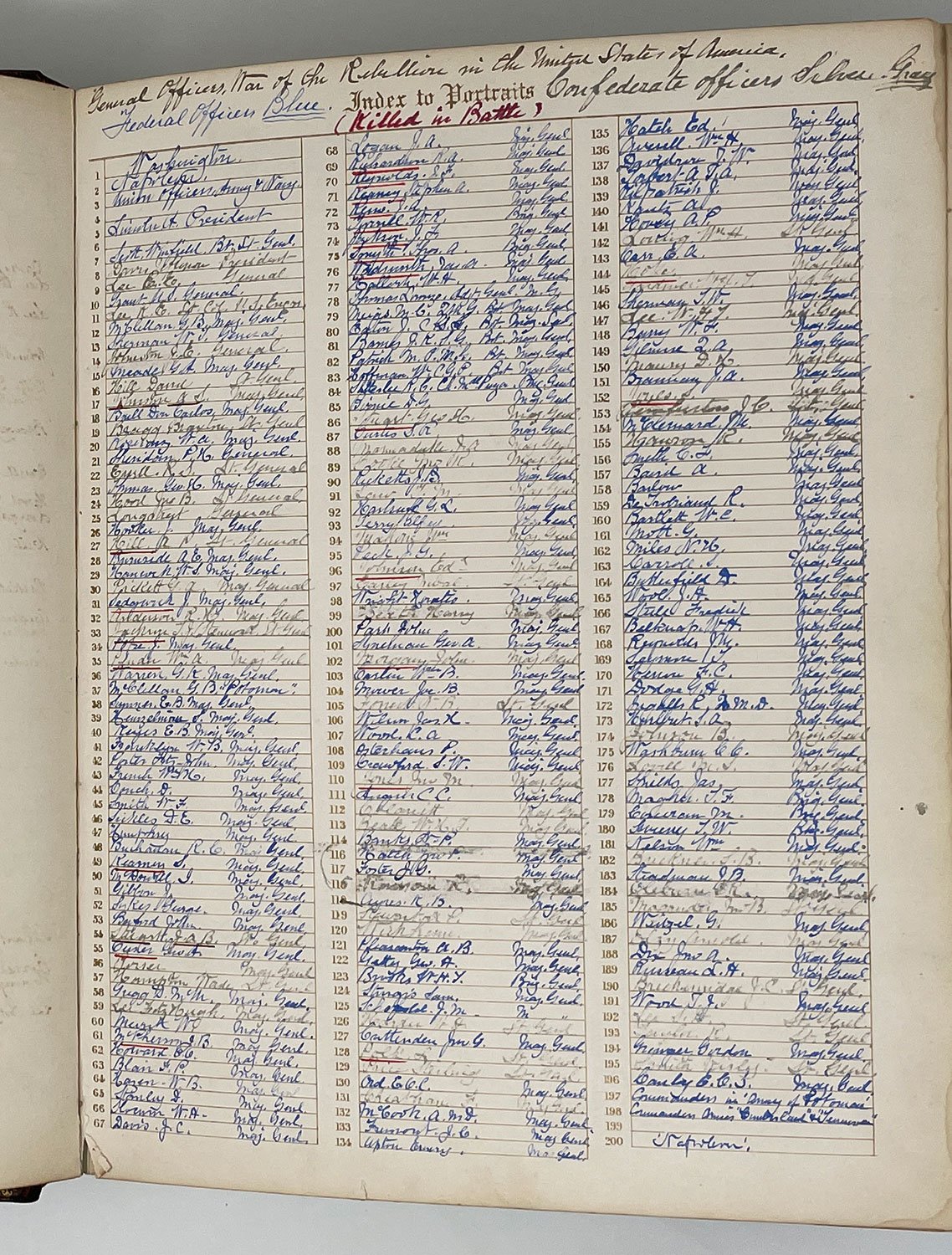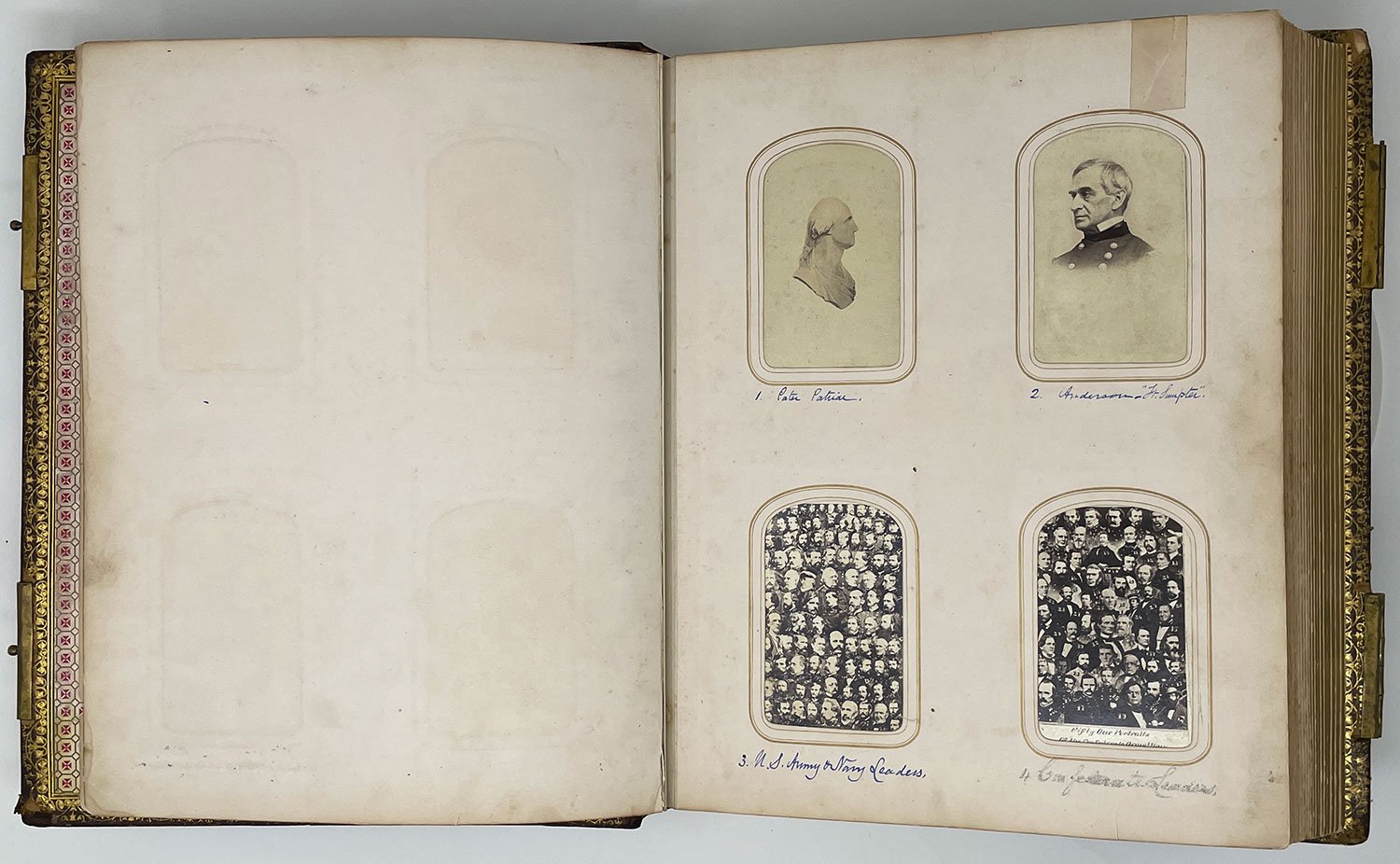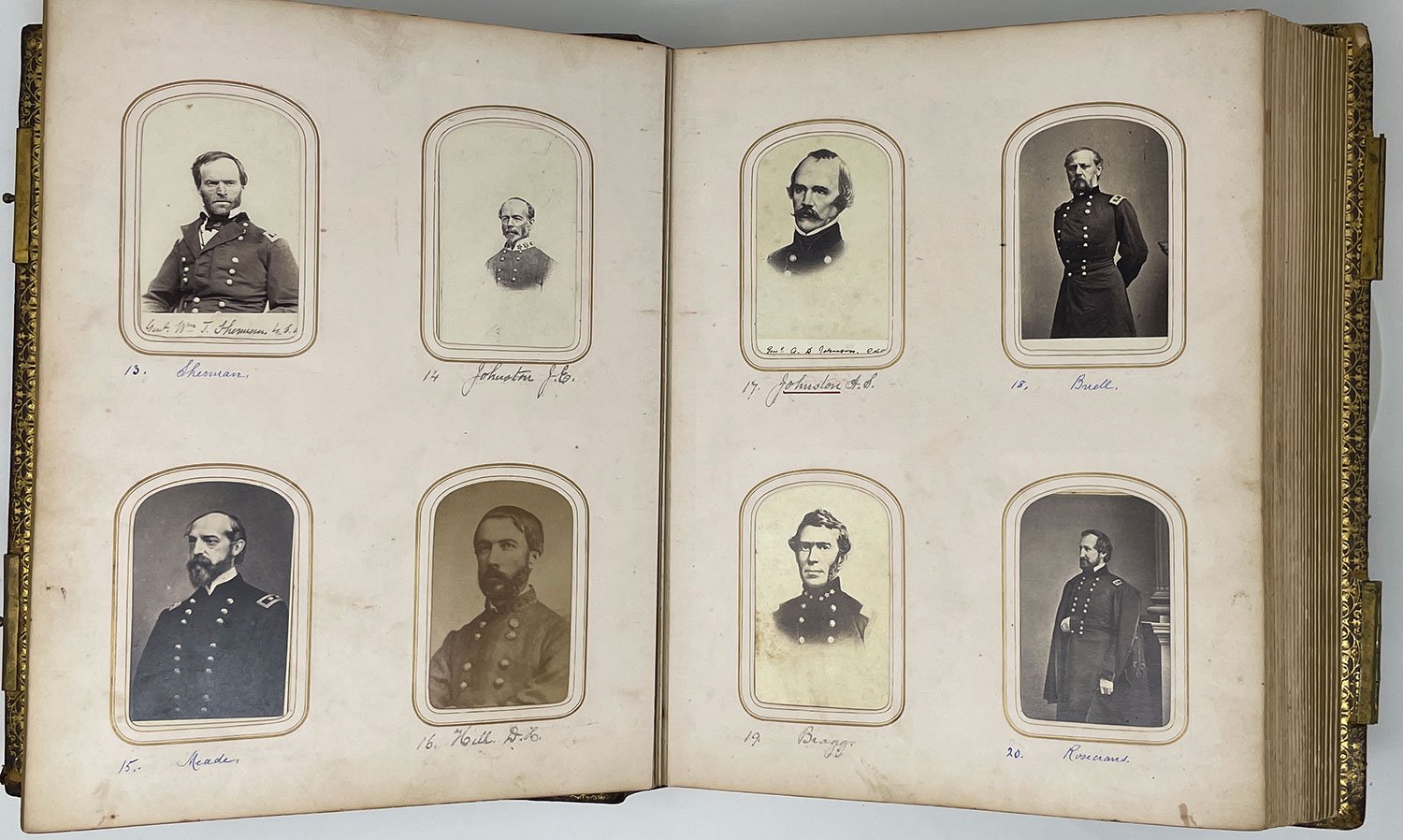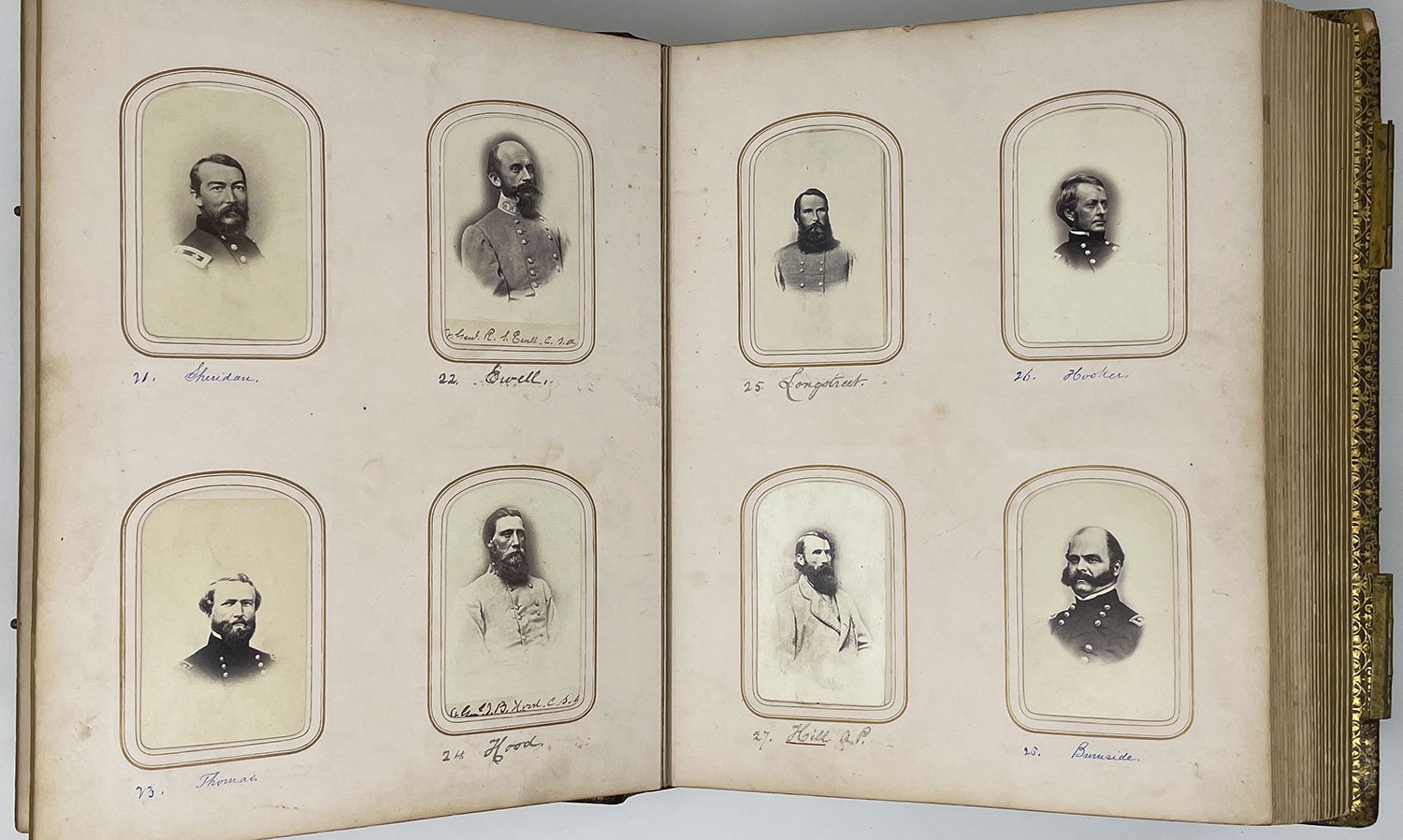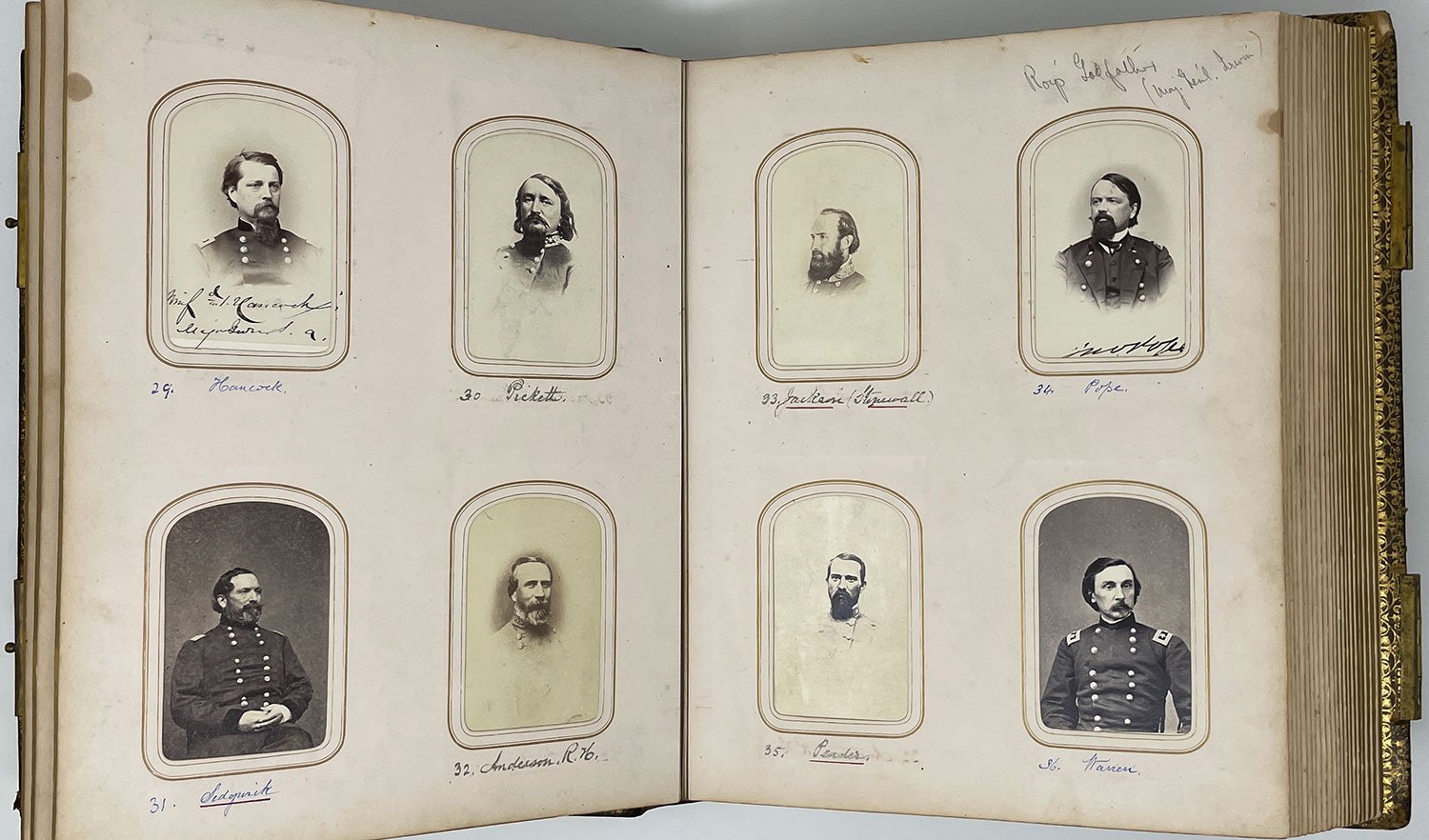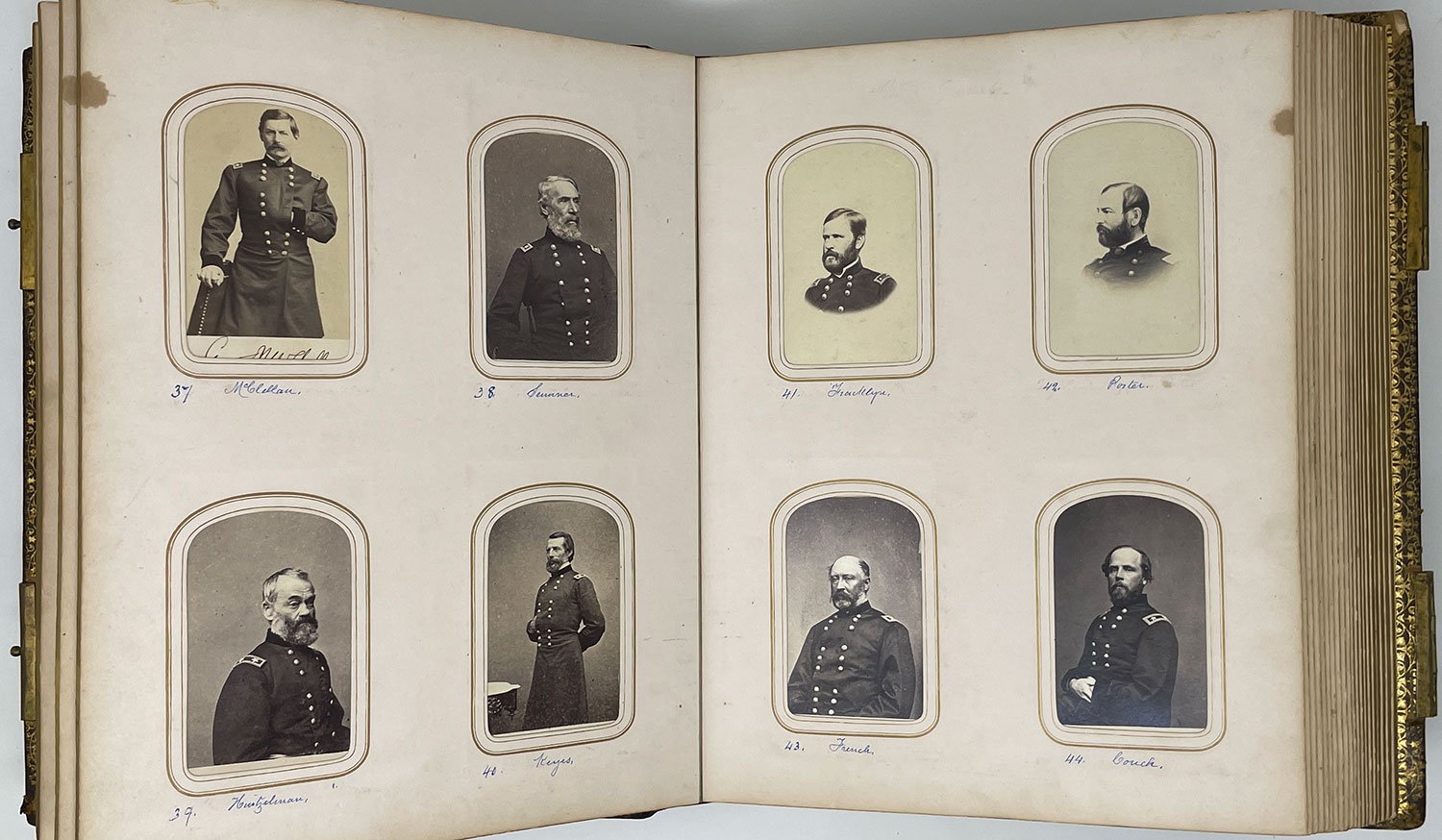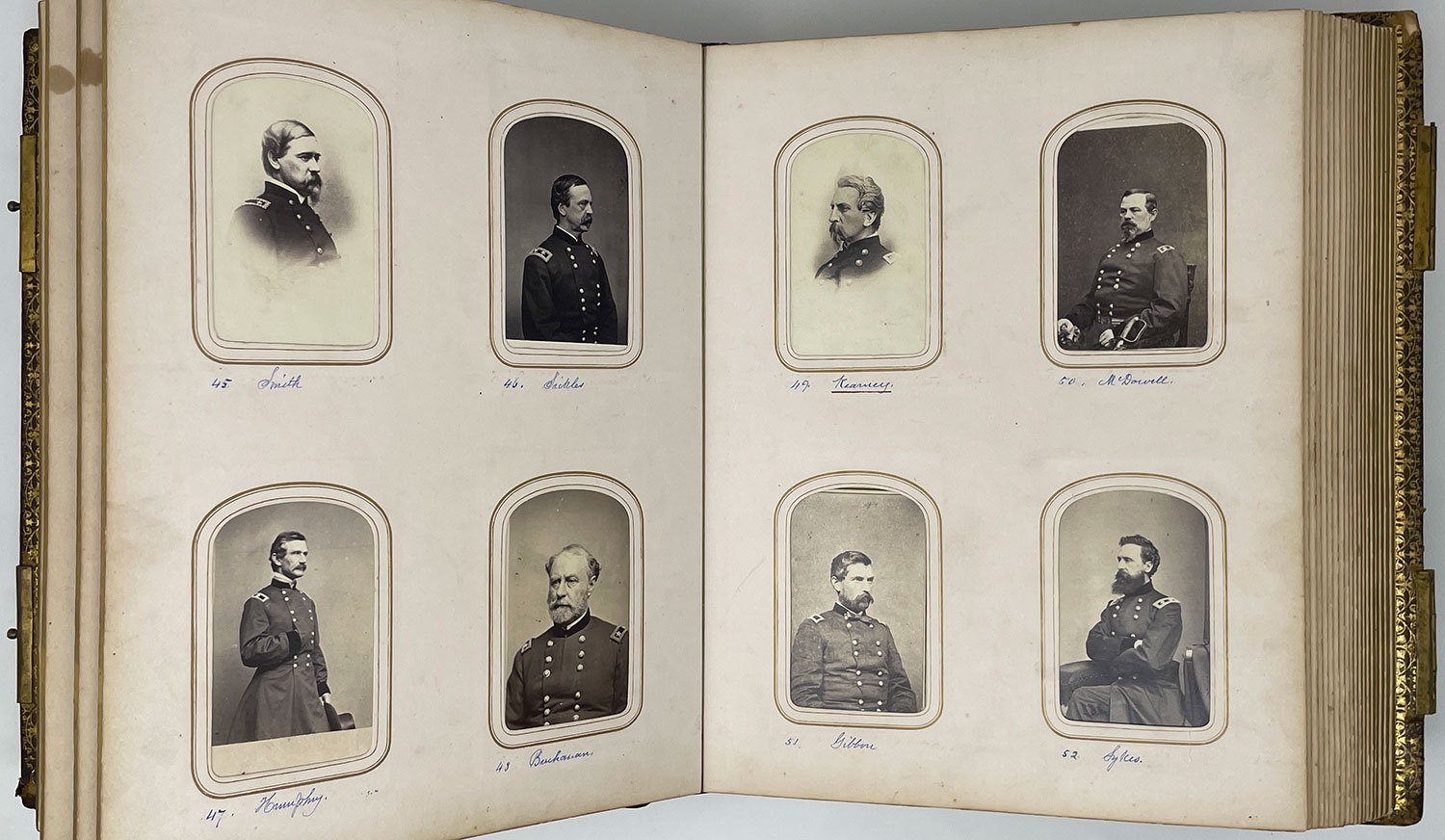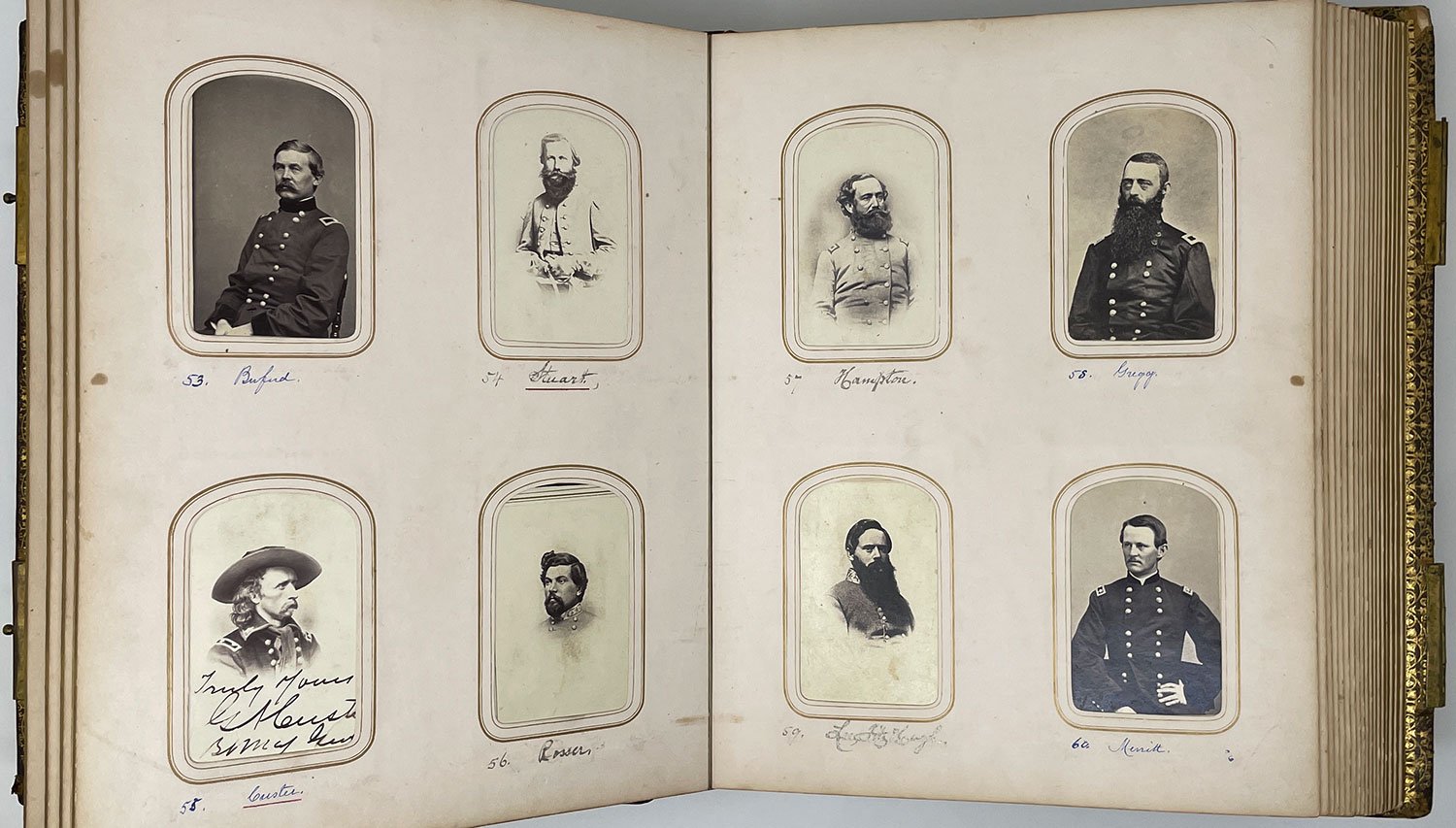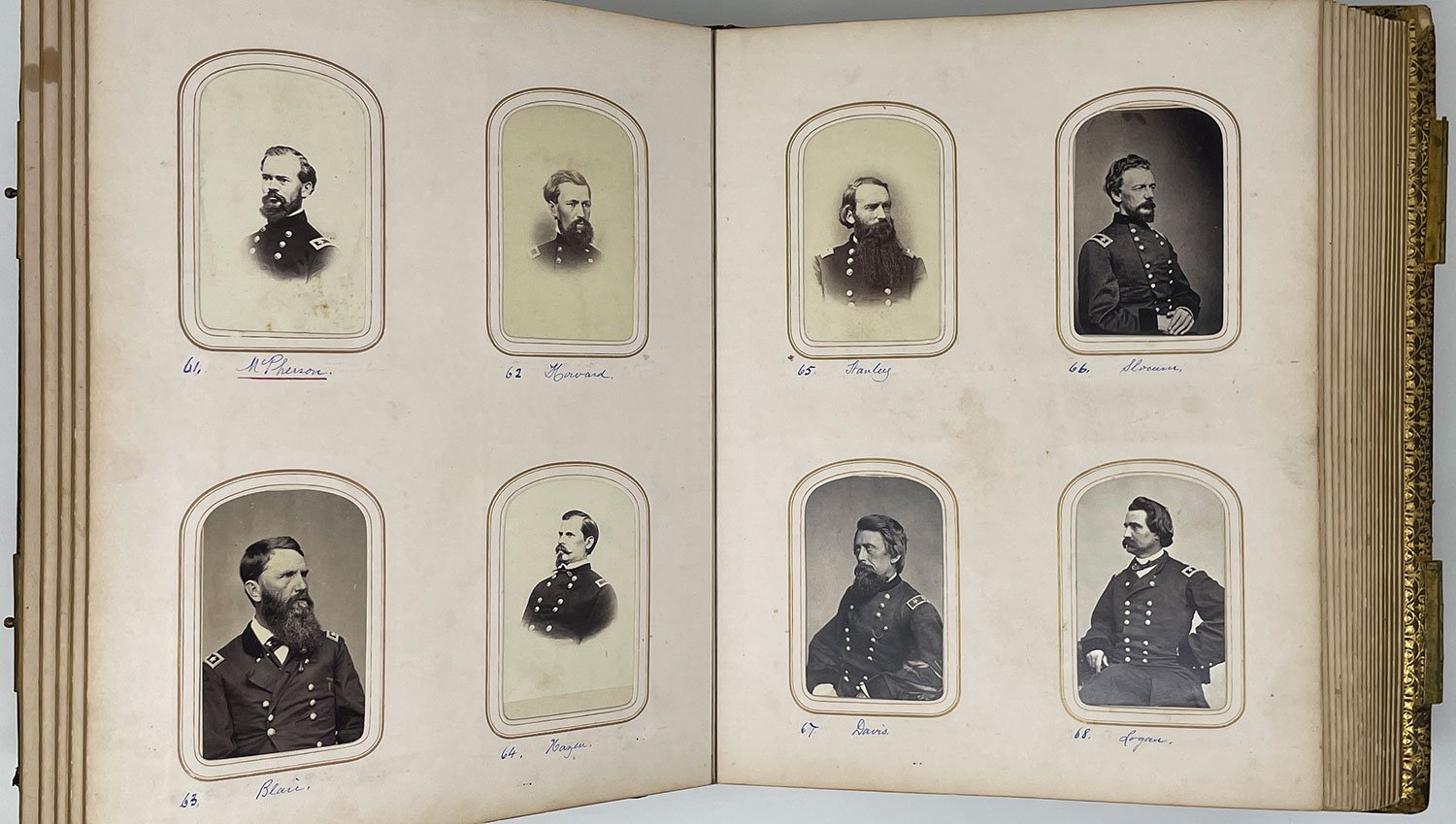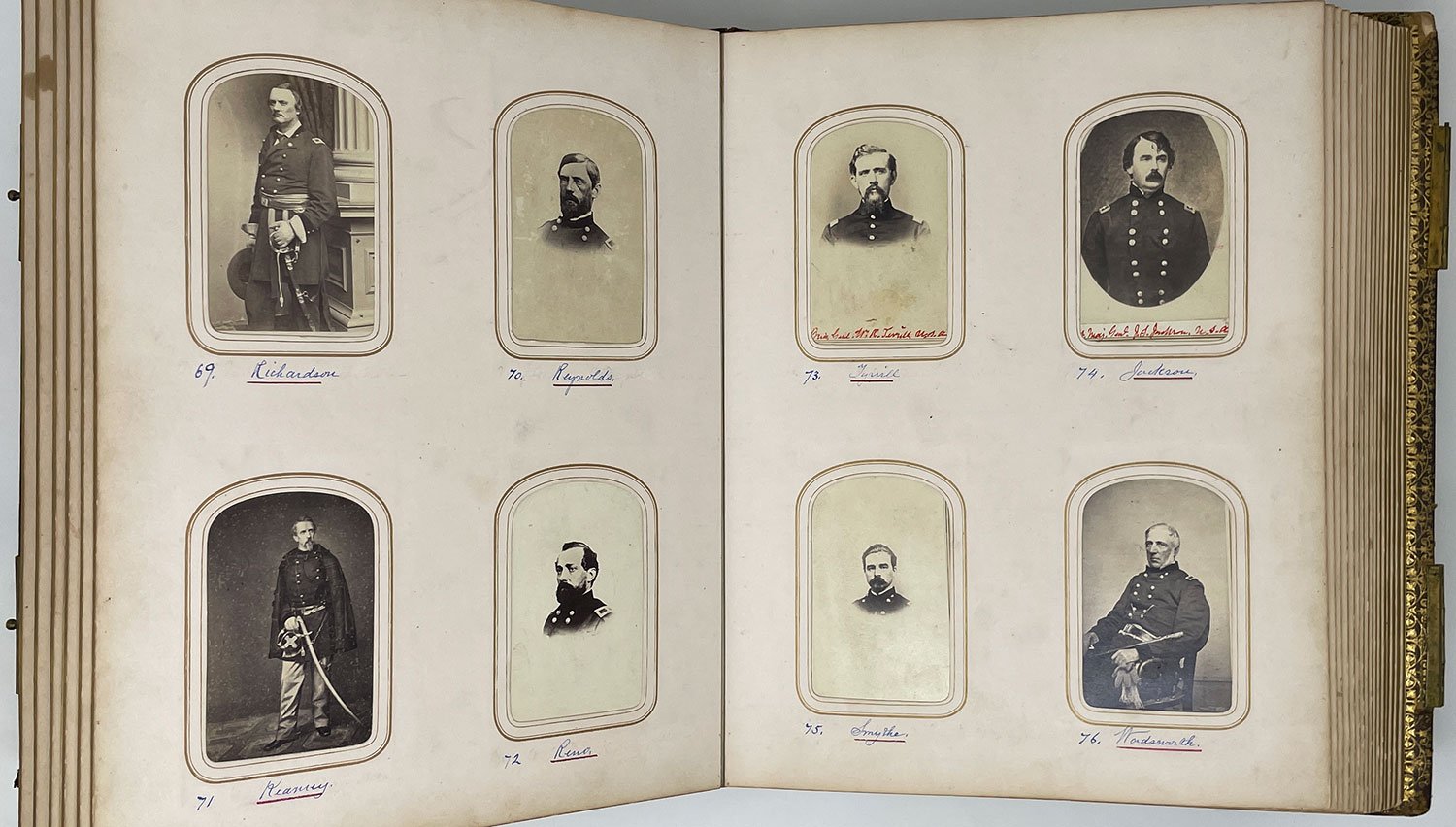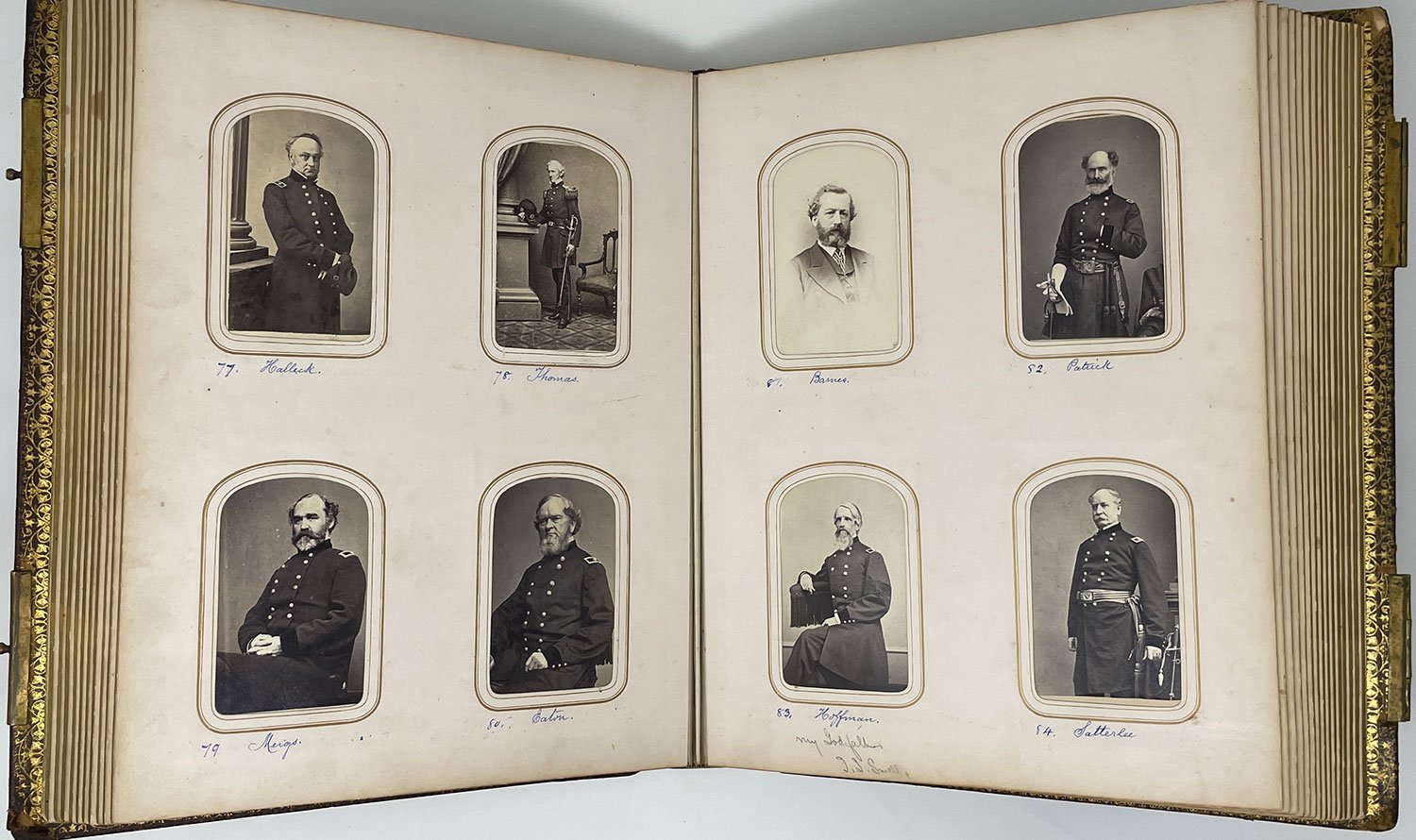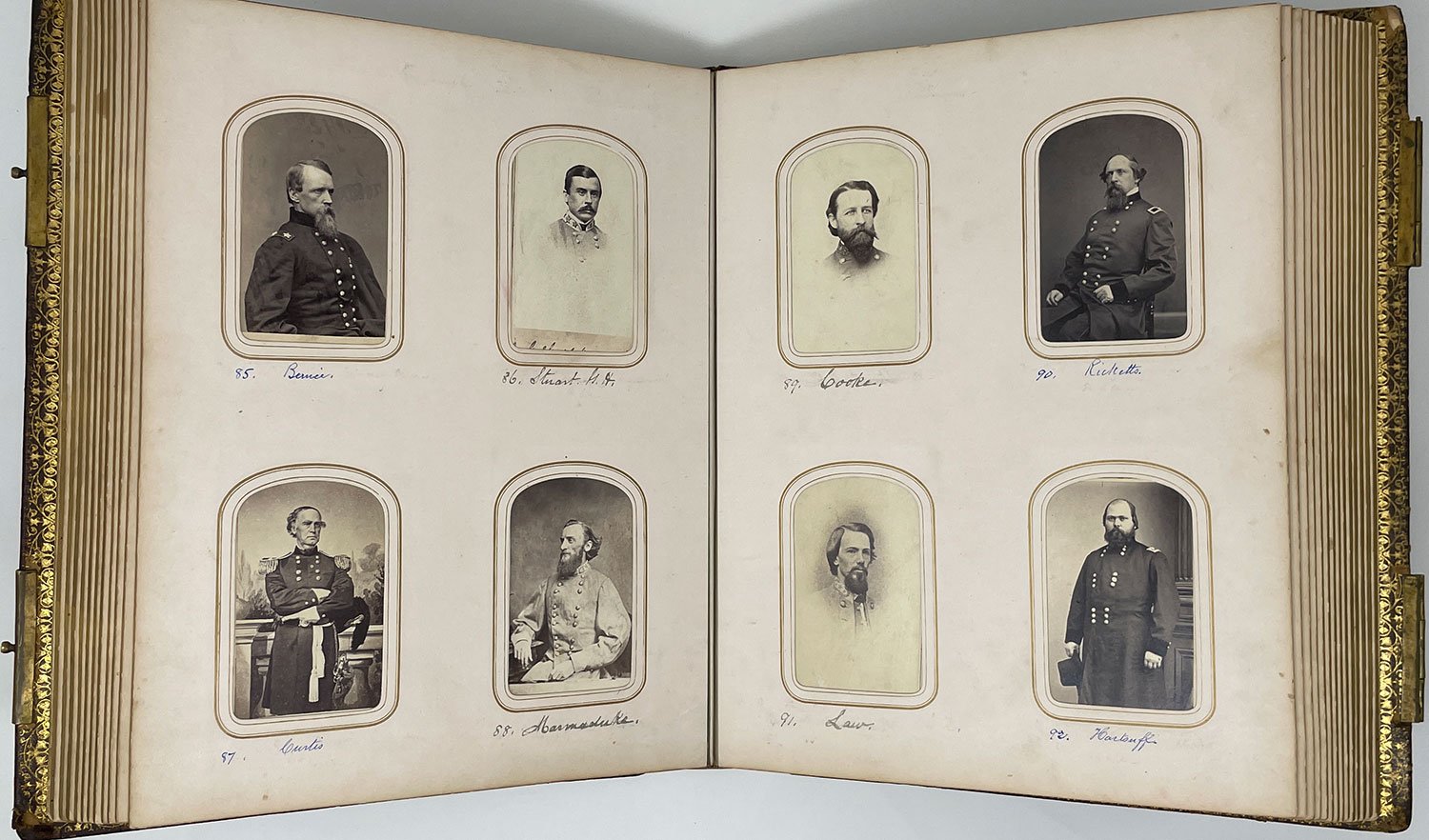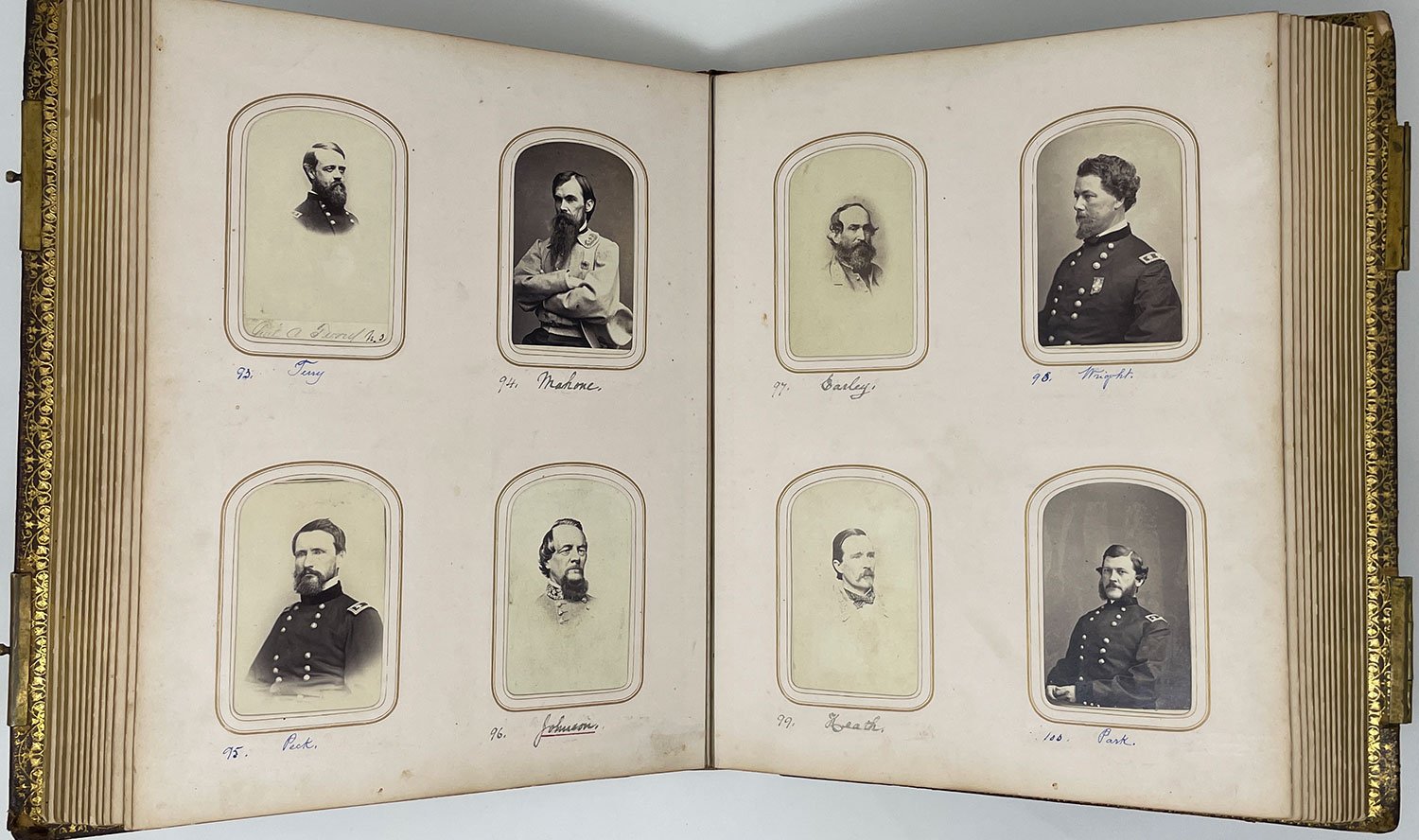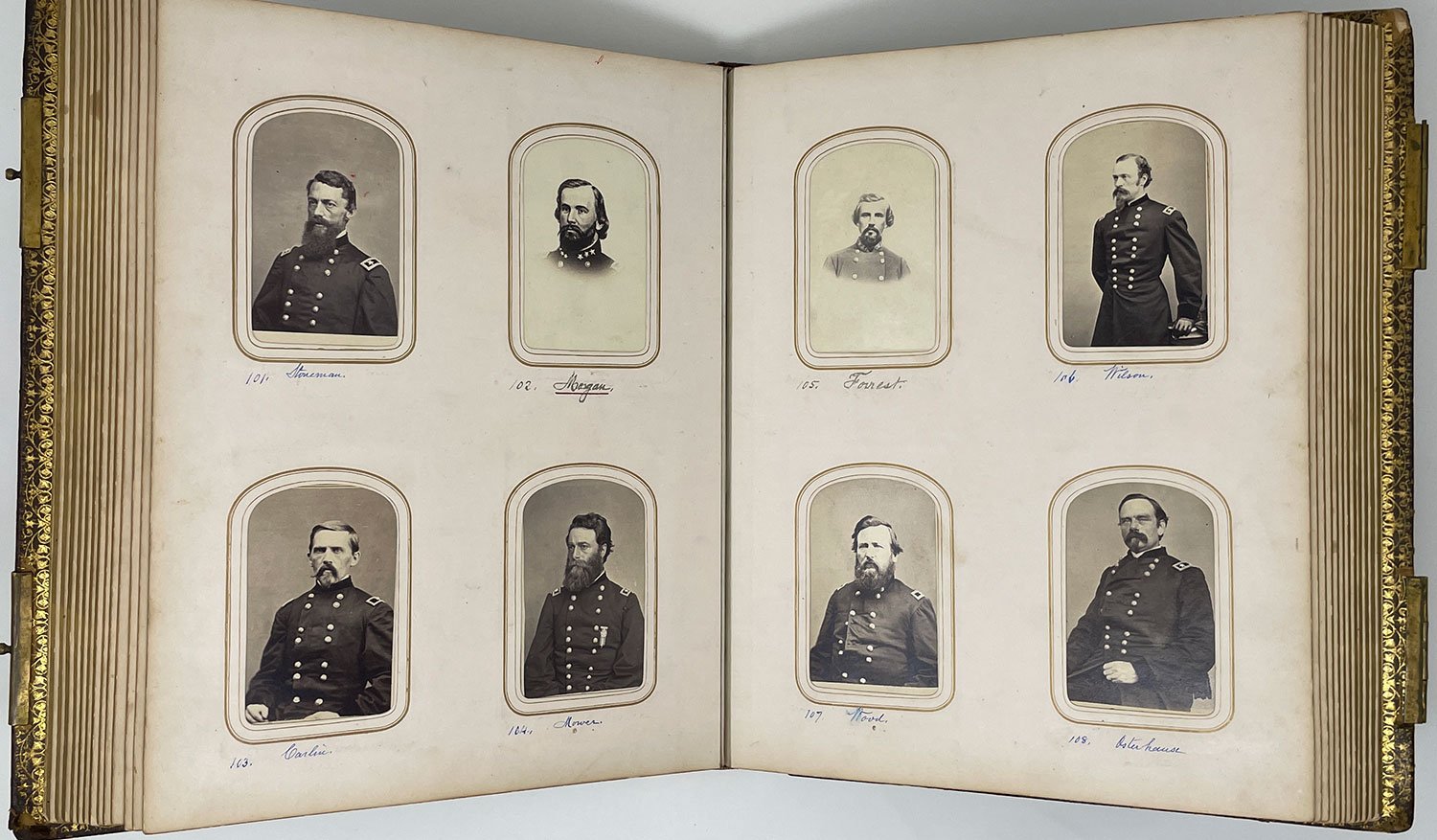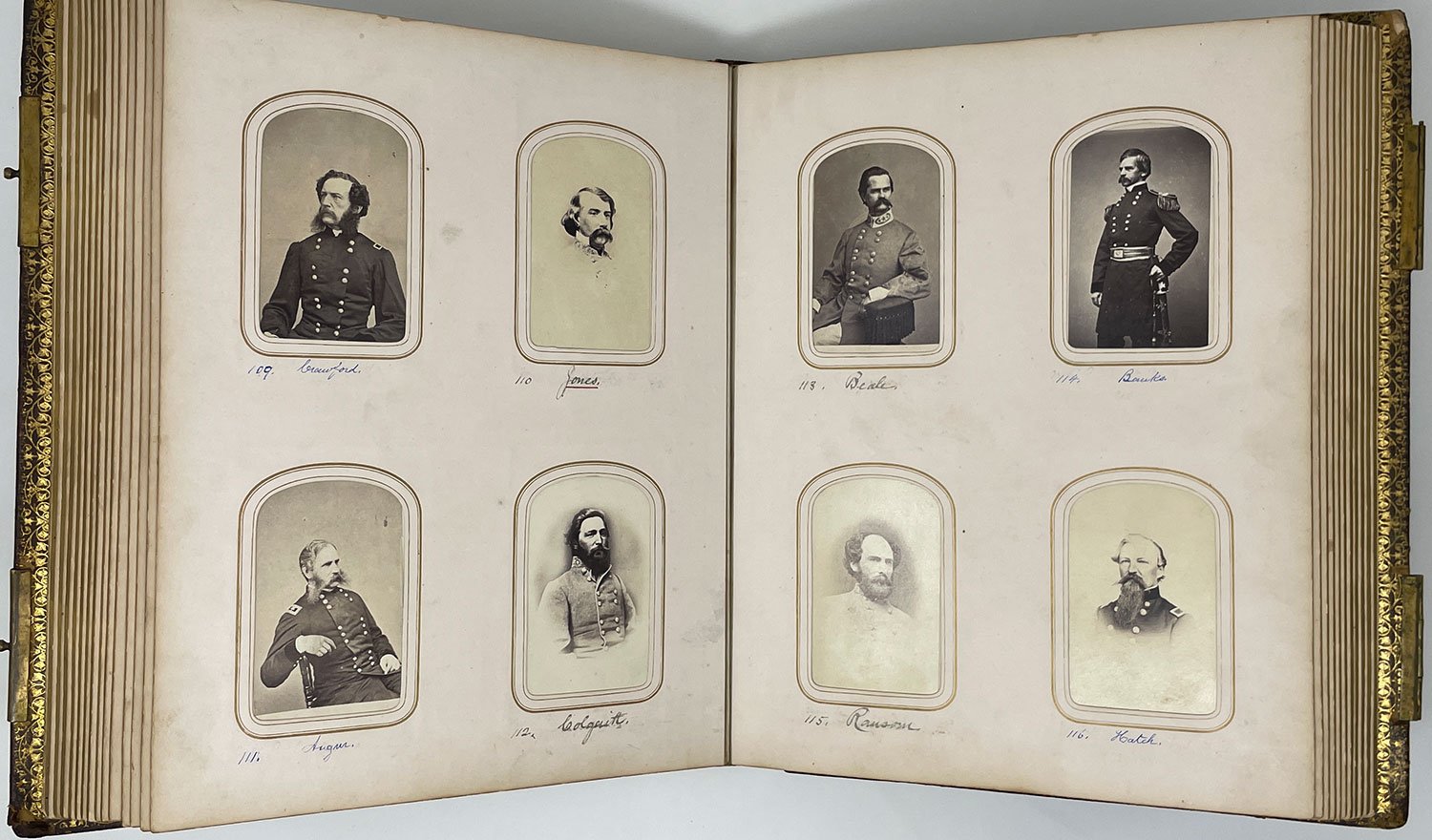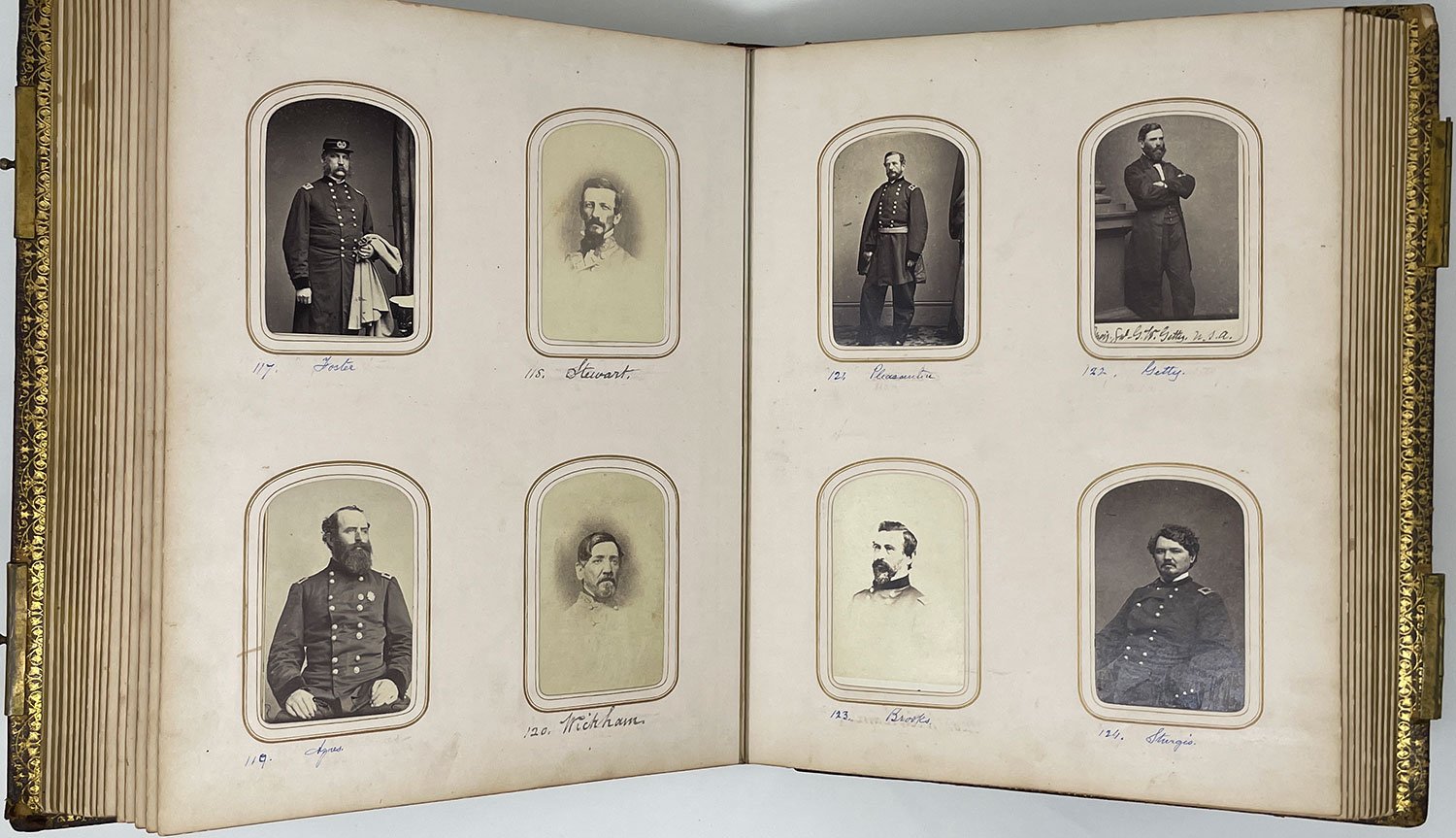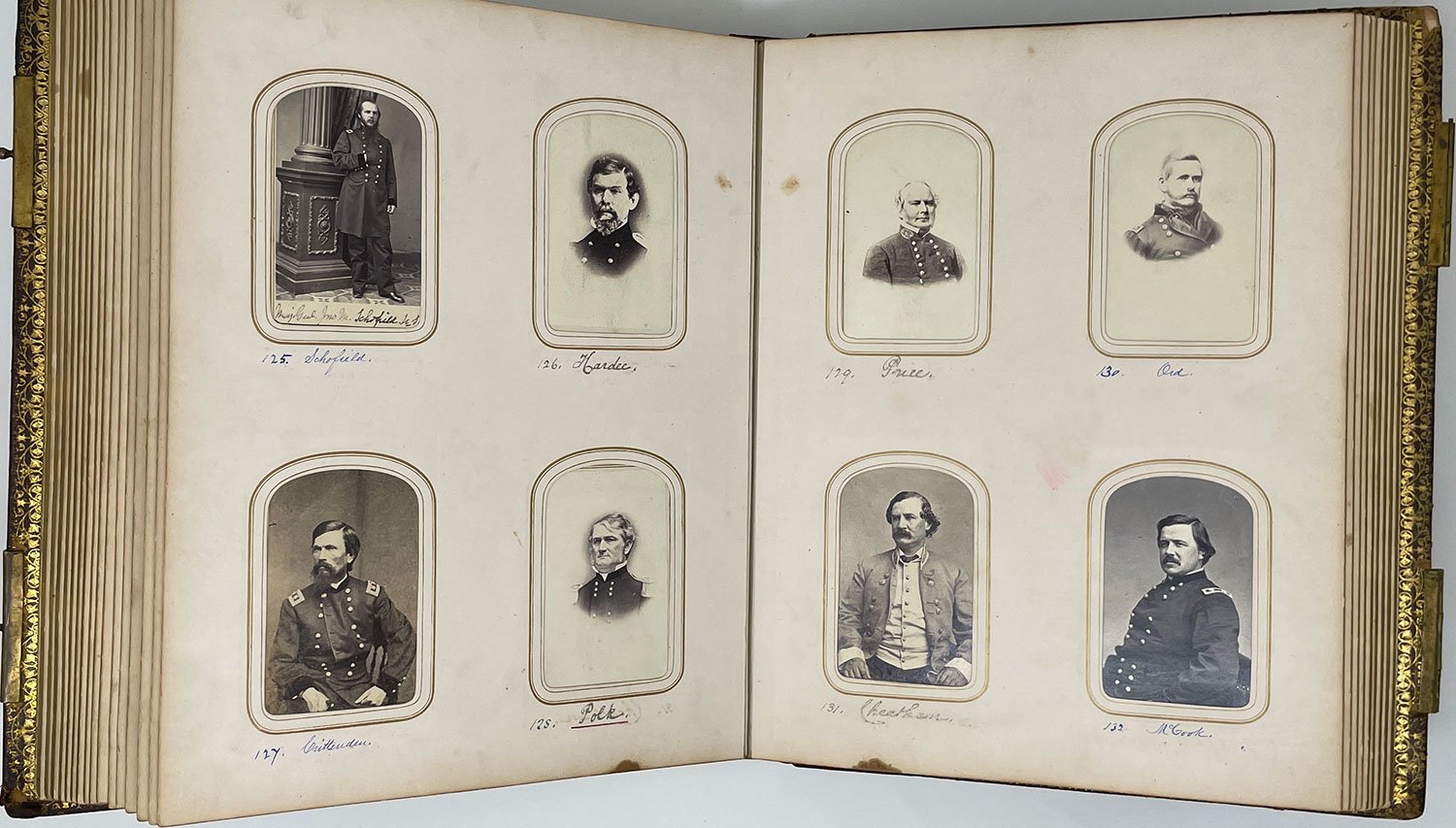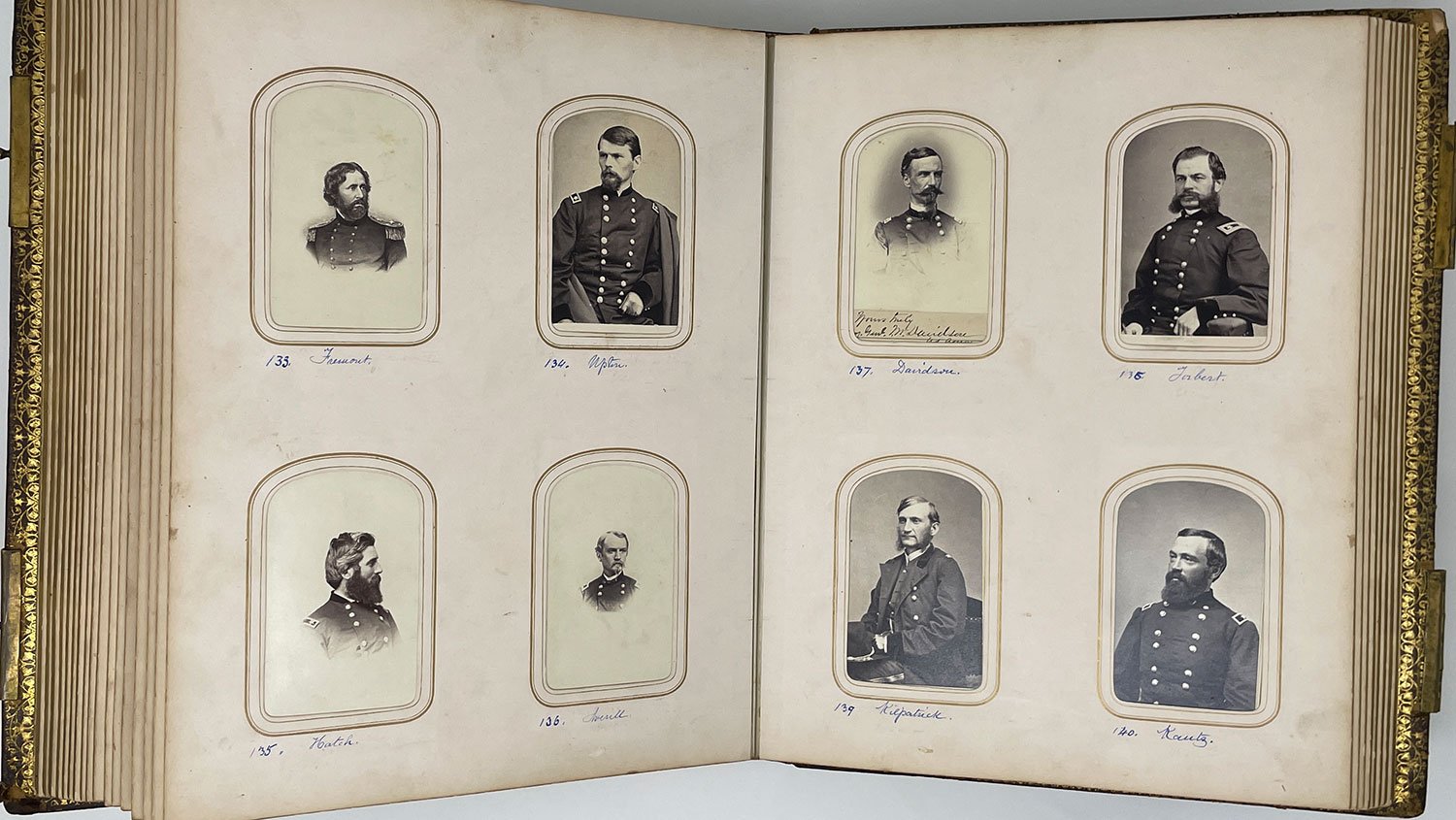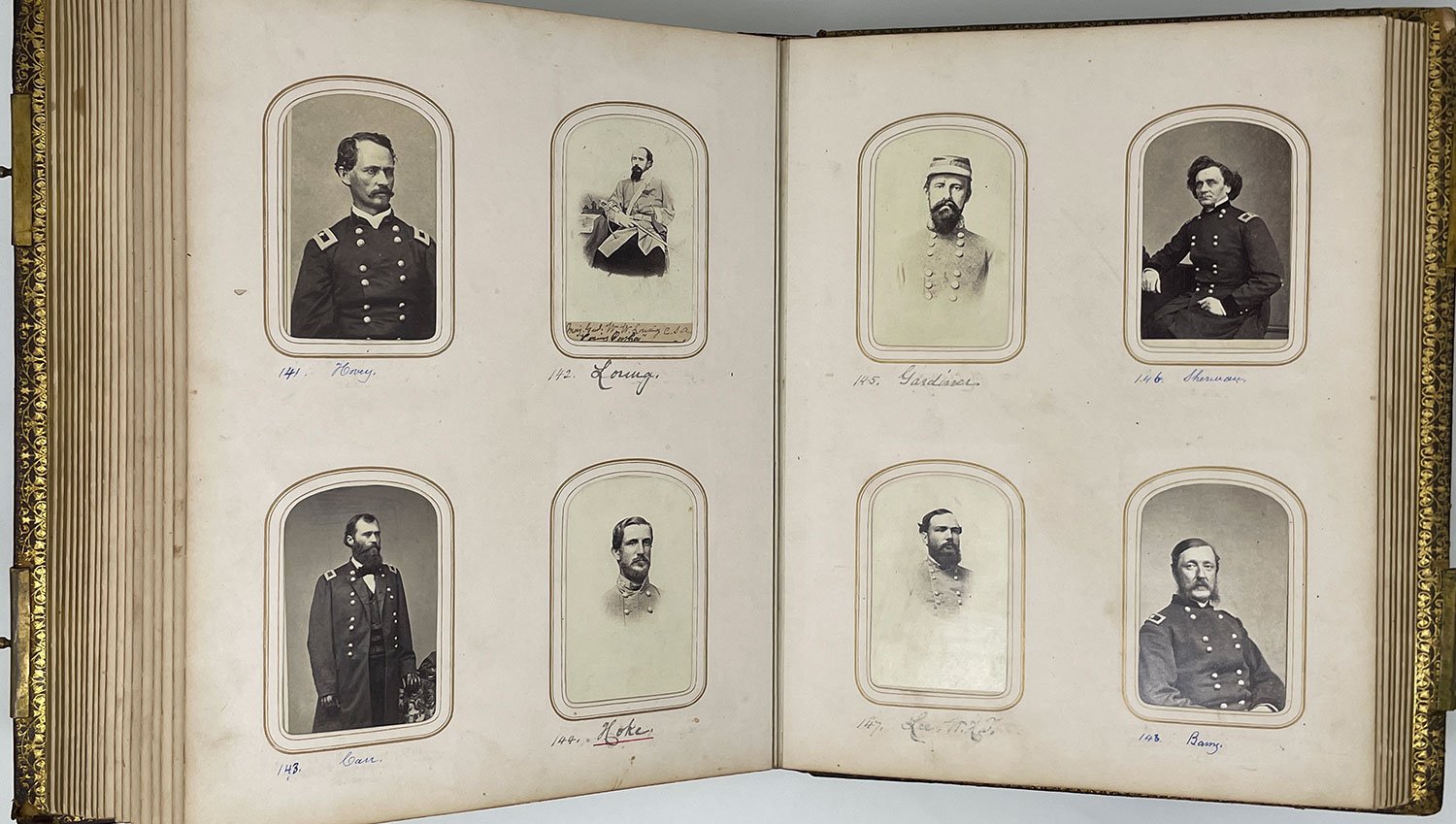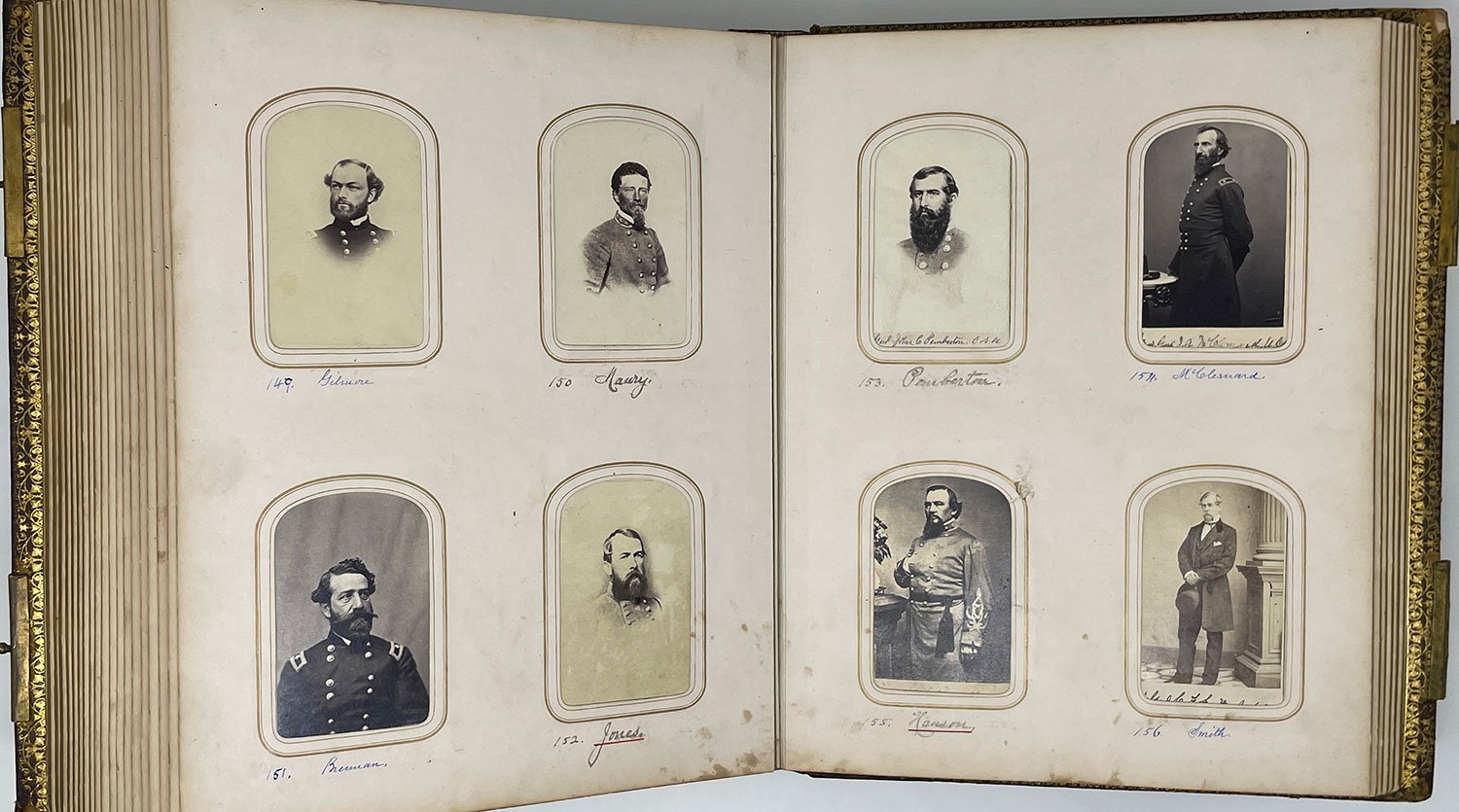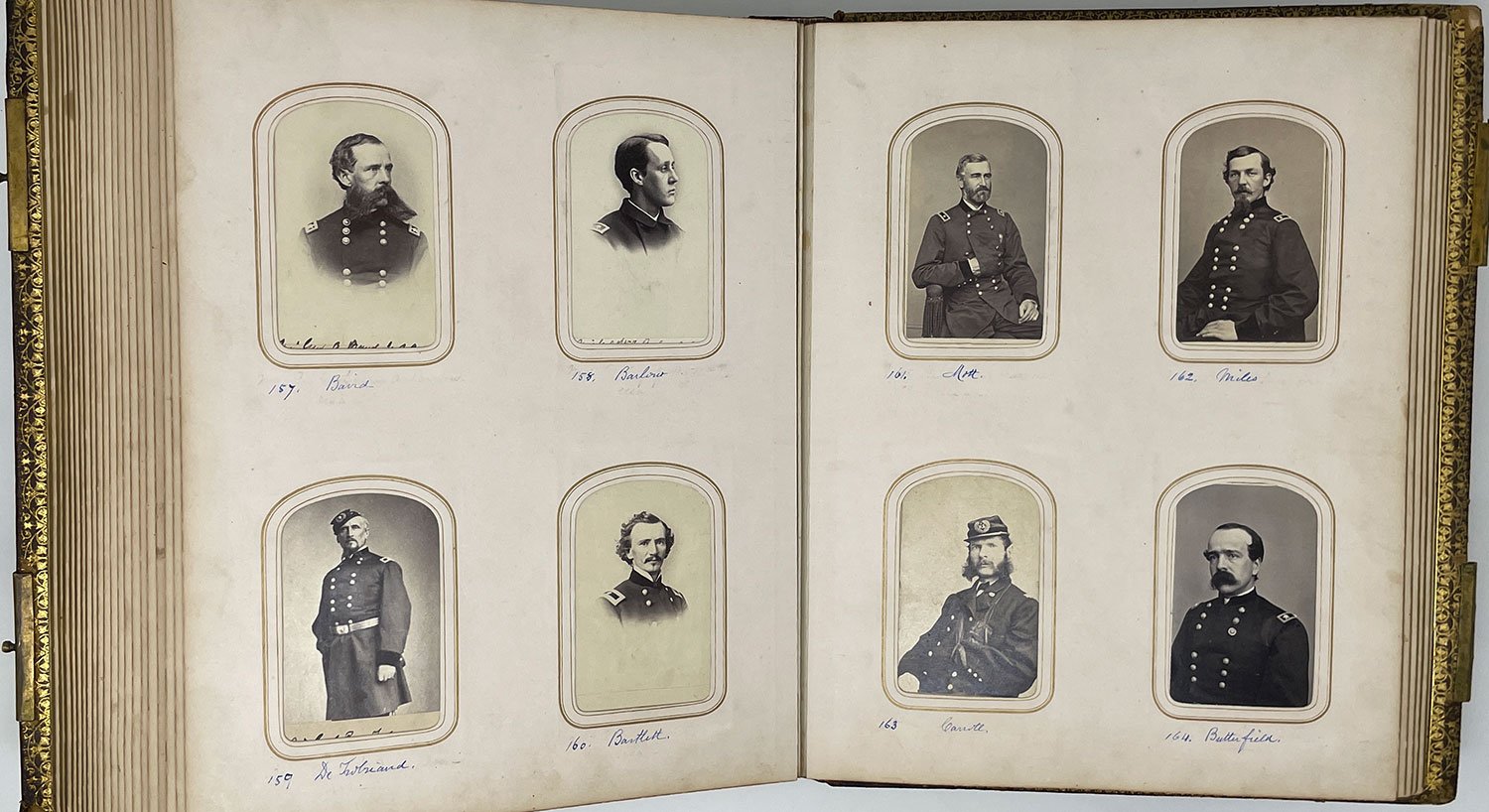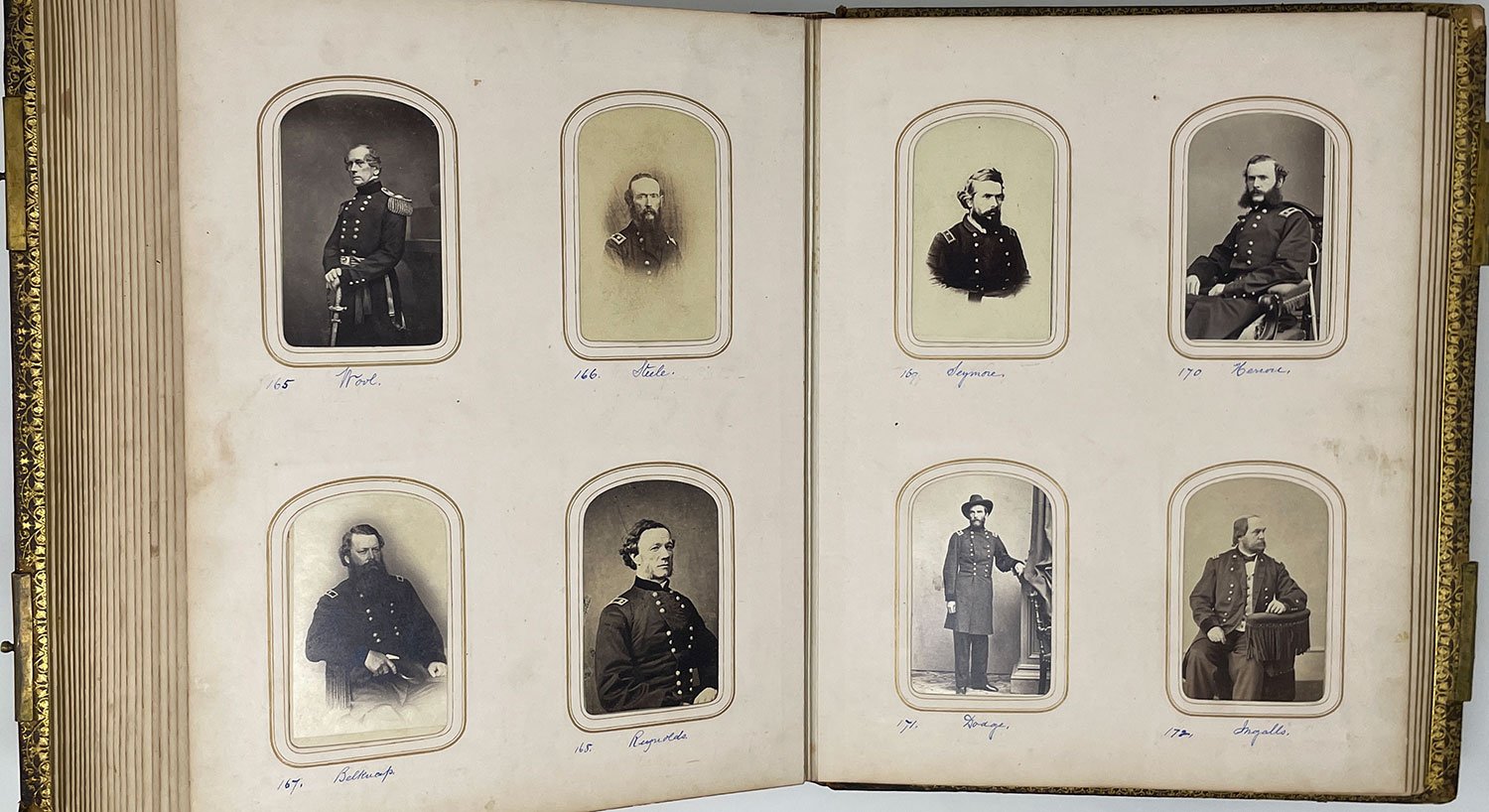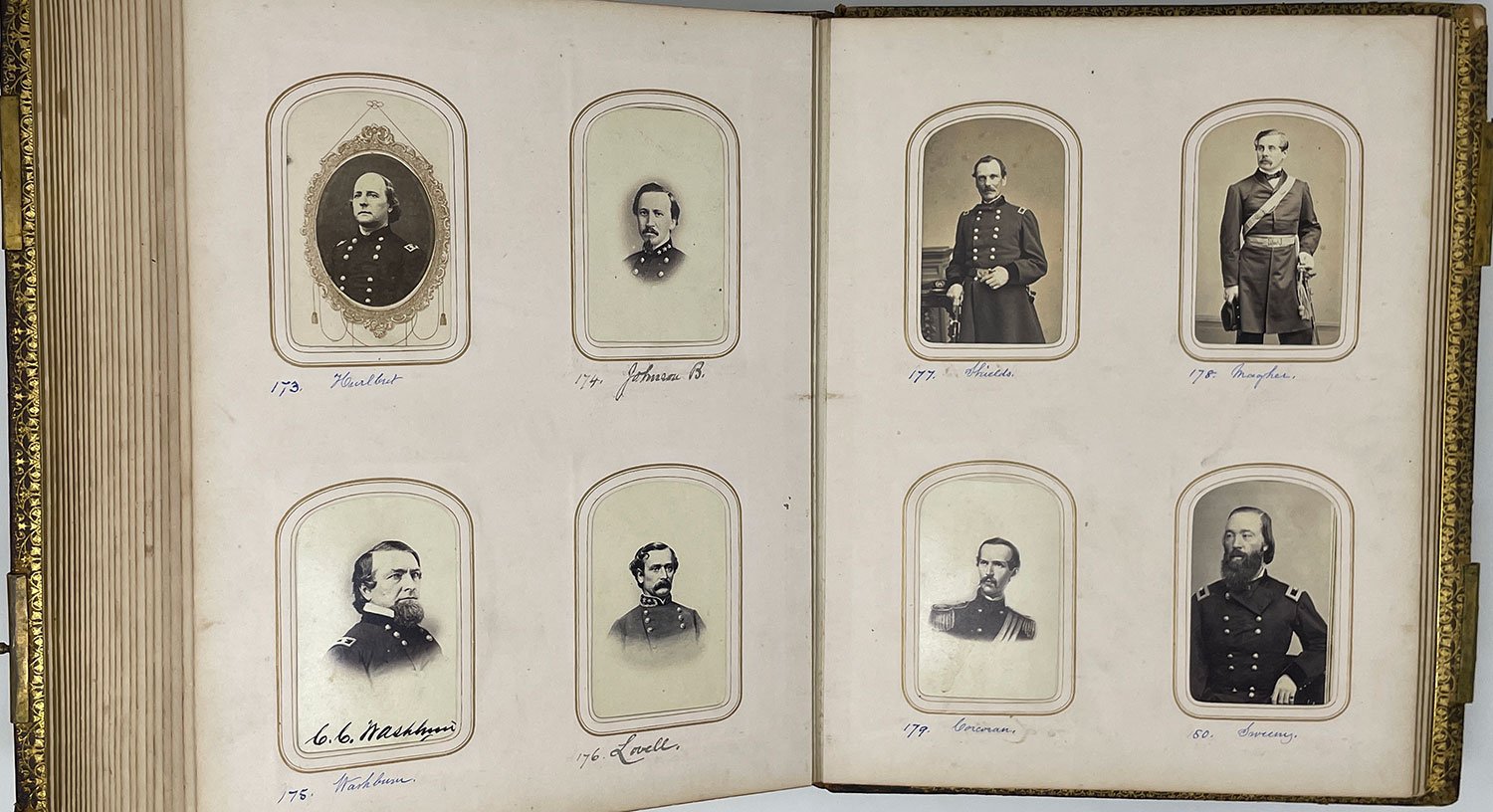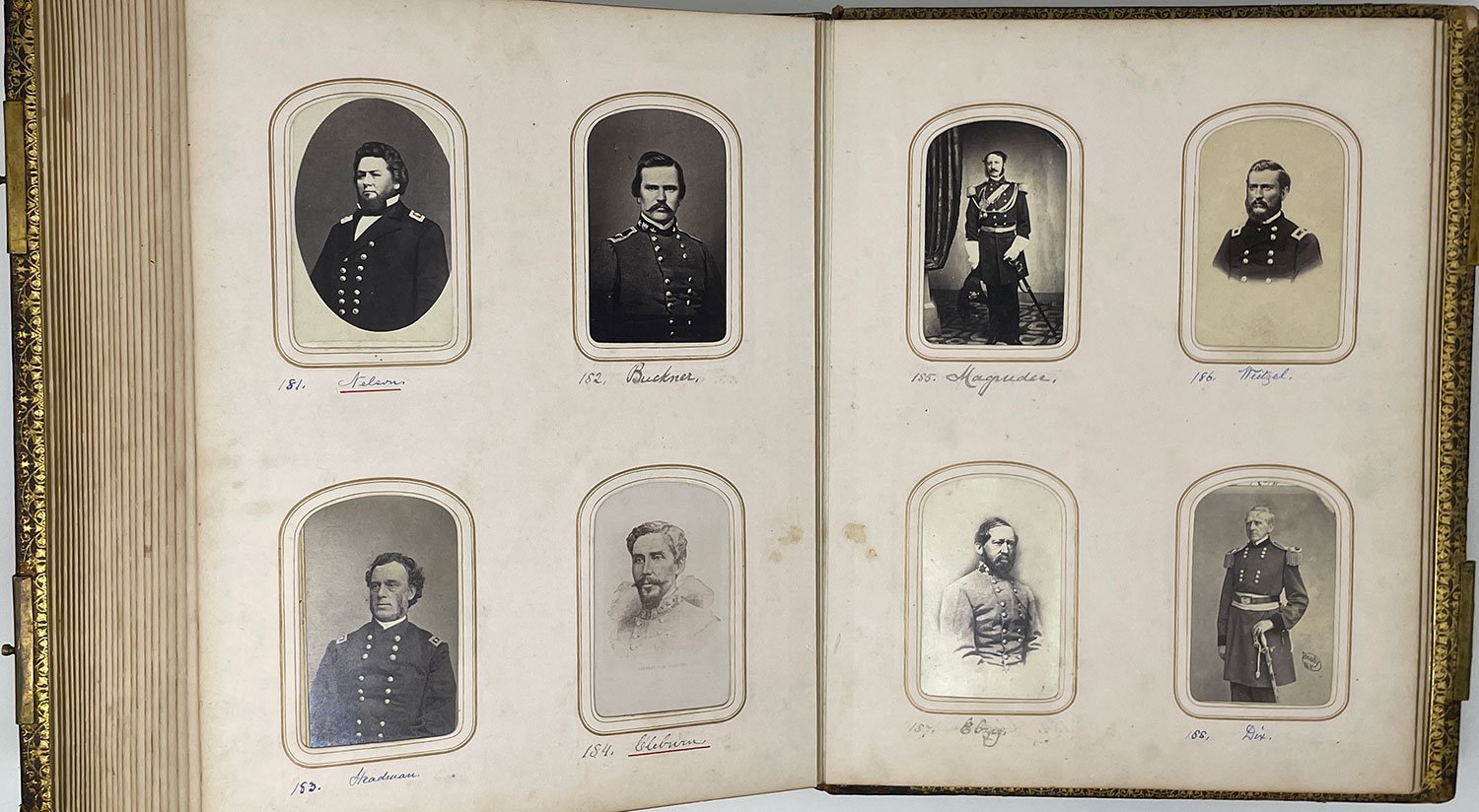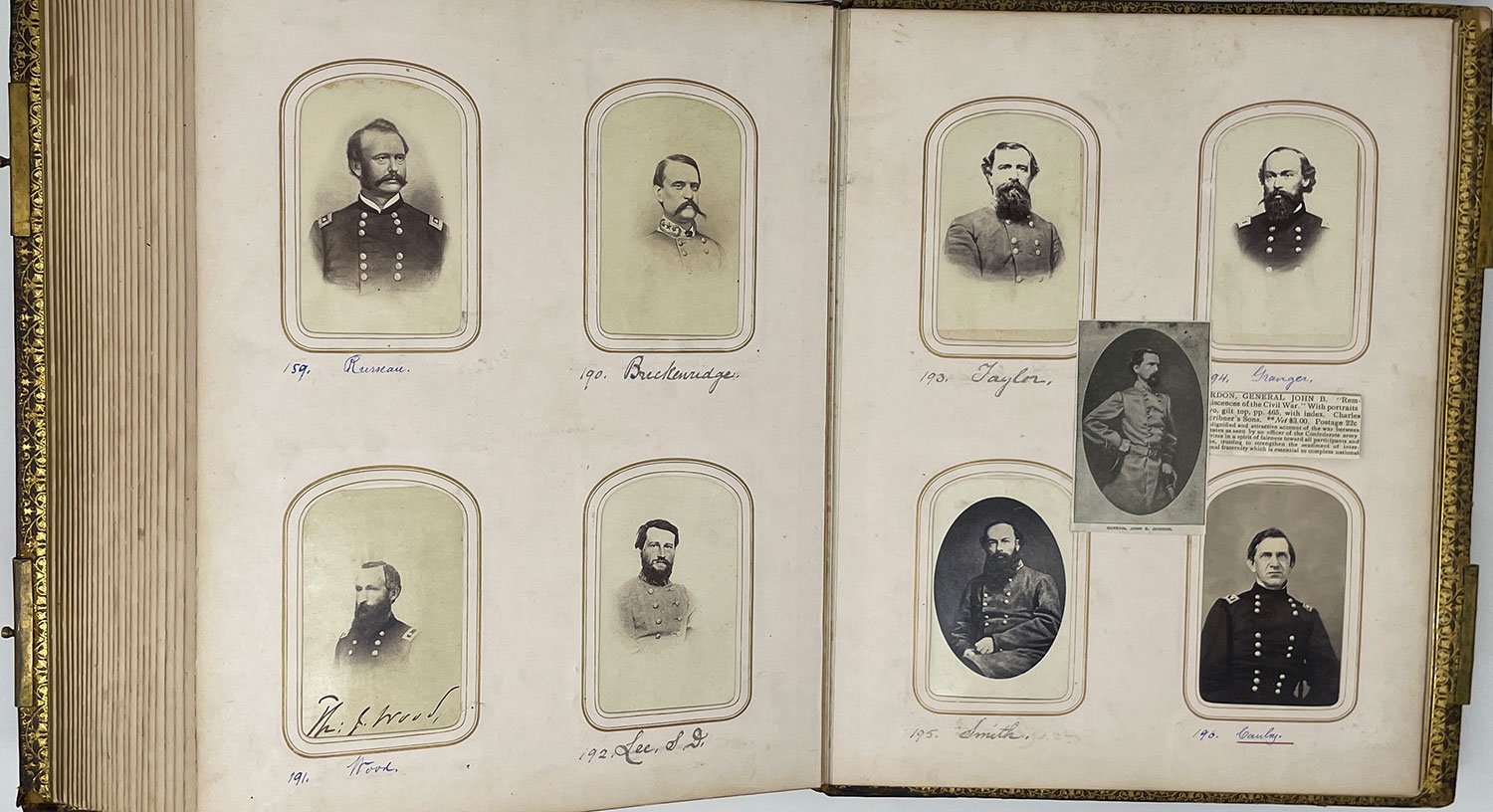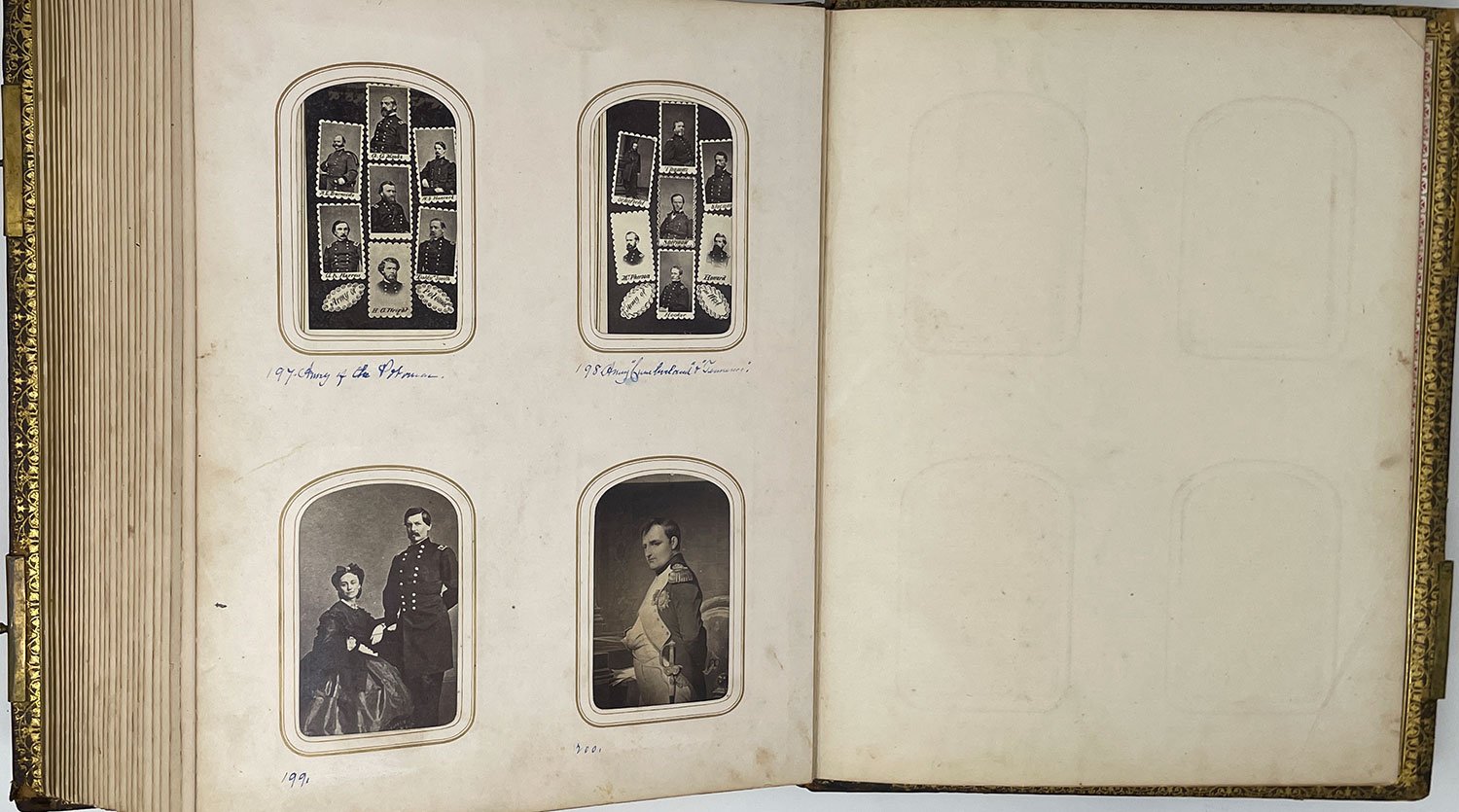The B. J. D. Irwin Collection of Union and Confederate CDVs
The fine leather-bound CDV album of U.S. and C.S. Commanders, 1861-65, collected by Brevet Brigadier General Bernard J. D. Irwin
About the album
In mid-February 1861, 30-year-old Bernard J. D. Irwin—then an assistant army surgeon on the Arizona frontier—set off through a snowstorm on a long-shot rescue mission that would earn him the nickname the “Fighting Doctor.” Later that year, with the Civil War in full swing, Irwin was appointed medical director under Major General William “Bull” Nelson. At the Battle of Shiloh in the spring of 1862, Irwin collected tents from the abandoned camps to shelter the wounded and is credited with the creation of the first battlefield hospital. In 1863 he served as director of U.S. Army hospitals in Memphis, receiving and caring for thousands of wounded from Grant’s campaign against Vicksburg. Irwin remained a medical officer in the army for another 30 years after the war, during which service he authored numerous pieces of medical scholarship. In 1894 he received the Medal of Honor for the 1861 rescue mission in Arizona, making his chronologically the very first ever to be awarded. Irwin died in Ontario, Canada, in 1917. His son George LeRoy Irwin was a major general in the First World War, while his grandson Stafford LeRoy Irwin was a lieutenant general in the Second World War. Irwin’s daughter Amy served as a nurse in the Great War and was married to Chicago businessman Robert R. McCormick.
The impressive leather-bound CDV photo album assembled by Irwin is among the finest collections of carte-de-visite (CDV) photographs of Civil War general officers to come to market in recent years. Its 200 individual CDVs, which include a mix of from-life images as well as touched-up photographs of engravings, represent virtually all of the more well-known personalities of the conflict and many of its more obscure characters. Among the group are a dozen autographed images, the most notable including George B. McClellan, Winfield Scott Hancock, and George Armstrong Custer.
The album itself was handsomely produced by the Philadelphia publishing house Lippincott & Co. and was custom bound with General Irwin’s name on the spine. The image collection was carefully cataloged by Irwin with the names of each officer listed in the index, including which side the man fought for and whether they were killed in battle.
Most of the collection has been sold, though a handful of the images are still available on my images page.
To read more about B. J. D. Irwin, see John H. Fahey, MC USN (Ret.), “More Than ‘The Fighting Doctor’: Brigadier General Bernard J. D. Irwin,” Military Medicine, Volume 180, Issue 11, November 2015, Pages 1116–1117, https://doi.org/10.7205/MILMED-D-15-00266

